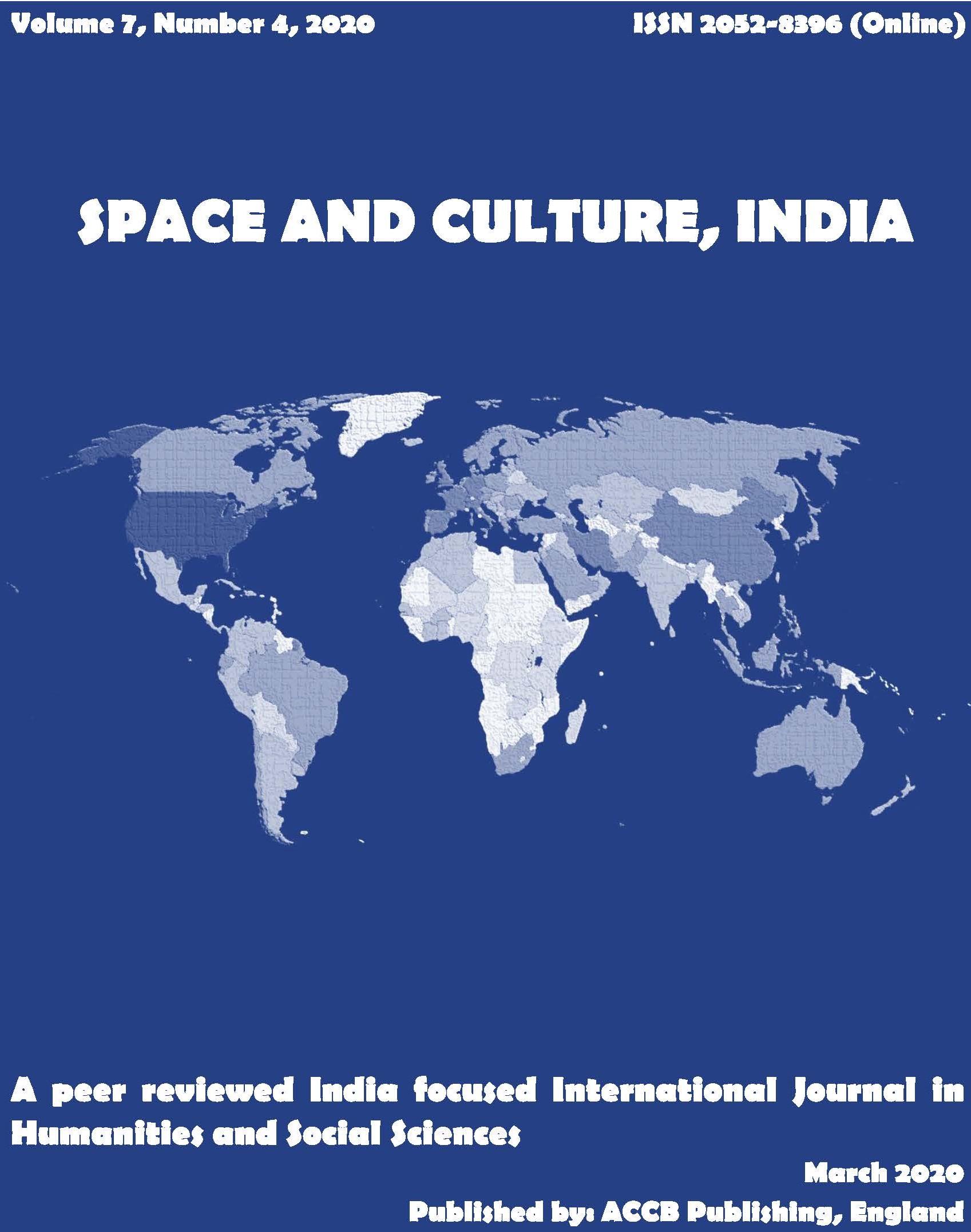Communication Strategy Using Da’wah Assembly to Heal Traumatised Natural Disaster Victims in Palu City

Abstract
This article discusses how Asybaalul Khairaat volunteers’ make use of the trauma healing approach via da’wah based communication strategy to tackle traumatised victims of natural disasters in a refugee camp at Palu, Indonesia. Traumatic events of natural disasters leave psychological impacts such as stress, and anxiety. In the study location, trauma healing programs are widely applied during the disaster and recovery process, with interpersonal exchanges used to increase self-motivation. Therefore, da'wah is one of the bases of the trauma healing process, provided by the Asybaalul Khairaat assembly group, which is supported by Alkhairaat scholars, such as HA. This technique aids in distributing and preaching religious values to the refugees in Alkhairaat schools. The purpose of this article, therefore, is to probe and describe the communication strategy of Asybaalul Khairaat volunteers. The qualitative method with a case study approach was used to analyse the data. At the orientation stage, they focused on the field survey, which allowed them to directly meet the victims or refugees and the initial distribution. Furthermore, humanitarian bonds were built with the attitude of positive mutual help which reflects true Islam. This was followed by the distributing of da'wah after the purchase of Islamic symbols. Finally, spontaneity and uniqueness emerged when Asybaalul Khairaat volunteers tried to demonstrate the right form of trauma healing linked to jihad in Islam by directly assisting in humanitarian activities.
Keywords
Communication Strategy, Da'wah Based Communication, Trauma Healing, Asybaalul Khairaat
References
- Ajdukovic, D. (2004). Social Contexts of Trauma and Healing. Medicine, Conflict and Survival, 20(2), 120–135. https://doi.org/10.1080/1362369042000234717 DOI: https://doi.org/10.1080/1362369042000234717
- American Psychological Association. (2013). Recovering Emotionally from Disaster.
- Bryant-Davis, T., & Wong, E. C. (2013). Faith to move mountains: Religious Coping, Spirituality, and Interpersonal Trauma Recovery. American Psychologist, 68(8), 675–684. https://doi.org/10.1037/a0034380 DOI: https://doi.org/10.1037/a0034380
- Bystritsky, A., Vapnik, T., Maidment, K., Pynoos, R. S., & Steinberg, A. M. (2000). Acute Responses of Anxiety Disorder Patients after a Natural Disaster. Depression and Anxiety, 11(1), 43–44. https://doi.org/10.1002/(SICI)1520-6394(2000)11:1<43::AID-DA7>3.0.CO;2-D DOI: https://doi.org/10.1002/(SICI)1520-6394(2000)11:1<43::AID-DA7>3.0.CO;2-D
- Creswell, J. W. (2015). Penelitian Kualitatif dan Desain Riset (Ed Ke-3). Yogyakarta: Pustaka Pelajar.
- Effendy, O. U. (1991). Radio, Siaran, Teori & Praktek. Bandung: Mandar Maju.
- Fact News. (2018). Trauma Healing Untuk Korban Gempa Lombok.
- Giller, E. (1999). What Is Psychological Trauma?
- Handayani, B. L. (2017). Aplikasi Nilai-Nilai Islam Dalam Wadah Kelompok Pengajian Muslimat Sebagai Upaya Recovery Pasca Bencana. In Menemukan Kembali Paradigma Pembangunan Islami (pp. 495–518). Jember: Jember University Press.
- Harville, E. W., Jacobs, M., & Boynton-Jarrett, R. (2015). When Is Exposure to a Natural Disaster Traumatic? Comparison of a Trauma Questionnaire and Disaster Exposure Inventory. PLOS ONE, 10(4), e0123632. https://doi.org/10.1371/journal.pone.0123632 DOI: https://doi.org/10.1371/journal.pone.0123632
- Hasan, A. W. (2006). Aplikasi Strategi dan Model Kecerdasan Spiritual (SQ) Rasulullah Di Masa Kini. Yogyakarta: IRCiSod.
- Hoskins, D., Duncan, L. G., Moskowitz, J. T., & Ordóñez, A. E. (2018). Positive Adaptations for Trauma and Healing (PATH), a pilot study of group therapy with Latino youth. Psychological Trauma: Theory, Research, Practice, and Policy, 10(2), 163–172. https://doi.org/10.1037/tra0000285 DOI: https://doi.org/10.1037/tra0000285
- Jordan, K. D., Masters, K. S., Hooker, S. A., Ruiz, J. M., & Smith, T. W. (2014). An Interpersonal Approach to Religiousness and Spirituality: Implications for Health and Well-Being. Journal of Personality, 82(5), 418–431. https://doi.org/10.1111/jopy.12072 DOI: https://doi.org/10.1111/jopy.12072
- Khairil, M. (2007). Pluralisme, Toleransi dan Budaya Komunikasi Ummat Beragama. Jurnal Inspirasi MKDU Untad, (3), 25.
- Khairil, M. (2017). The Transformation of the Symbolic Meaning of Radicalism in Acts of Terrorism Post-Conflict in Poso Central Sulawesi. International Conference on Democracy, Accountability and Governance, 282–289. DOI: https://doi.org/10.2991/icodag-17.2017.55
- Khairil, M. (2018). Wahdah Islamiyah’s Counter-Radicalism Strategy Through The New Media Network in Da’wah Development Of Palu City. Al-Ulum, 18(2), 417–435. https://doi.org/10.30603/au.v18i2.610 DOI: https://doi.org/10.30603/au.v18i2.610
- Moleong, L. J. (2014). Metodologi Penelitian Kualitatif. Bandung: Remaja Rosdakarya.
- Najarian, L. M., Goenjian, A. K., Pelcovitz, D., Mandel, F., & Najarian, B. (2001). The effect of relocation after a natural disaster. Journal of Traumatic Stress, 14(3), 511–526. https://doi.org/10.1023/A:1011108622795 DOI: https://doi.org/10.1023/A:1011108622795
- Penick, E. C., Powell, B. J., & Sieck, W. A. (1976). Mental Health Problems and Natural Disaster: Tornado Victims. Journal of Community Psychology, 4(1), 64–68. https://doi.org/10.1002/1520-6629(197601)4:1<64::AID-JCOP2290040103>3.0.CO;2-0 DOI: https://doi.org/10.1002/1520-6629(197601)4:1<64::AID-JCOP2290040103>3.0.CO;2-0
- Rahman, A. (2018). Analisa Kebutuhan Program Trauma Healing Untuk Anak-Anak Pasca Bencana Banjir Di Kecamatan Sungai Puas Tahun 2018: Implementasi Manajemen Bencana. LPPM UMSB, XII(2), 1–6.
- Rokib, M. (2012). The Significant Role of Religious Group’s Response to Natural Disaster in Indonesia: the case of Santri Tanggap Bencana (Santana). Indonesian Journal of Islam and Muslim Societies, 2(1), 53–77. DOI: https://doi.org/10.18326/ijims.v2i1.53-77
- Saputra, W. (2011). Pengantar Ilmu Dakwah. Jakarta: Raja Grafindo Persada.
- Sarafino, E. P. (1990). Health Psychology. Singapore: John Willey & Sons.
- Shoukat, A., & Pulla, V. R. (2017). Desert Dwellers’ Meaning and Existence of Spirituality: A Gendered Case Study of Cholistan, Pakistan. Space and Culture, India, 5(2), 32-46. https://doi.org/10.20896/saci.v5i2.278 DOI: https://doi.org/10.20896/saci.v5i2.278
- Sutopo, H. B. (2002). Metodologi Penelitian Kualitatif. Surakarta: Sebelas Maret University.
- Ulfa, E. (2013). Intervensi Spiritual Emotional Freedom Technique untuk Menurunkan Gangguan Stres Pasca Trauma Erupsi Gunung Merapi. Journal of Educational, Health, and Community Psychology (JEHCP), 2(1), 38–57. https://doi.org/http://dx.doi.org/10.12928/jehcp.v2i1.3743
- Walsh, F. (2007). Traumatic Loss and Major Disasters: Strengthening Family and Community Resilience. Family Process, 46(2), 207–227. https://doi.org/10.1111/j.1545-5300.2007.00205.x DOI: https://doi.org/10.1111/j.1545-5300.2007.00205.x
- Zoellner, L., Graham, B., Marks, E., Feeny, N., Bentley, J., Franklin, A., & Lang, D. (2018). Islamic Trauma Healing: Initial Feasibility and Pilot Data. Societies, 8(3), 47. https://doi.org/10.3390/soc8030047 DOI: https://doi.org/10.3390/soc8030047